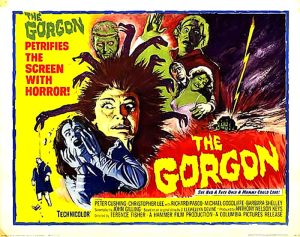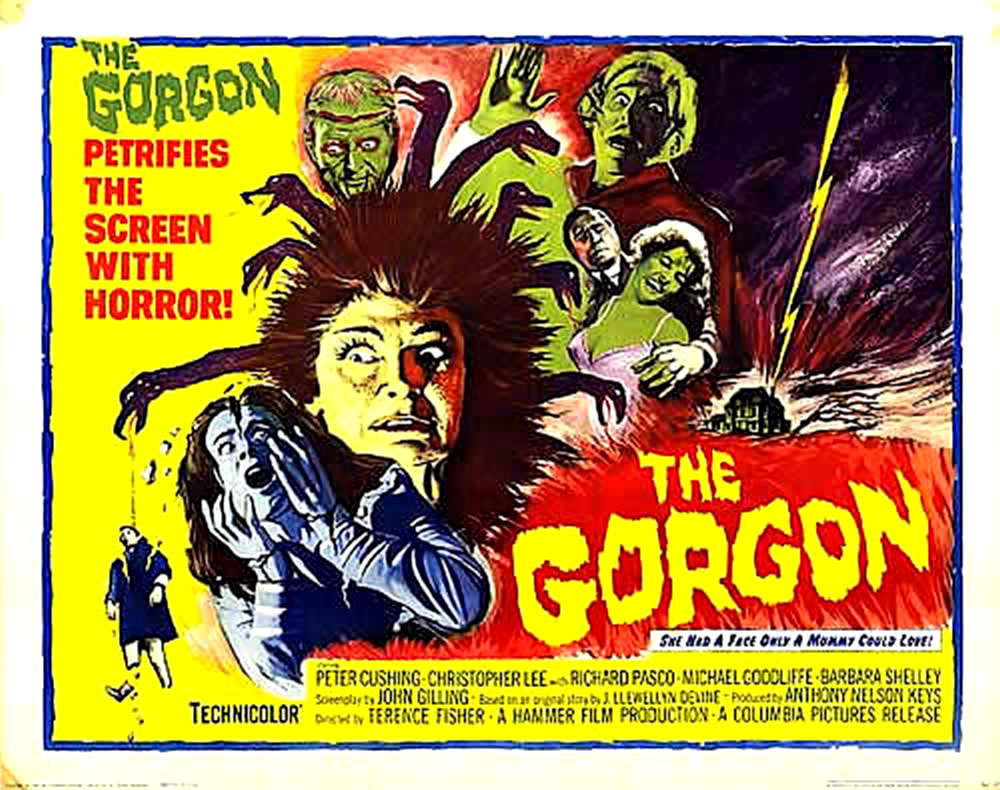
Those who tiresomely belabor the inadequacy of the snakes on the Gorgon’s head at the film’s conclusion entirely miss the point. It is not surprising in our cretinous era that some would lament the unavailability of computer generated special effects in 1964. That they persist in doing so, however, only serves to illustrate how very far these modernists are in both sensibility and aesthetic principles from the 19th century Gothic tradition that this film so faithfully seeks to reproduce. The point isn’t the snakes but the psychological force behind the baleful facial expression!
In this connection, it is appropriate to observe that Terence Fisher was absolutely right in considering this one of his best films.
And make no mistake: this film is very much in the 19th century Gothic tradition in both story and atmosphere. In that sense, it may be compared to a story by Ludwig Tieck, while its visuals hearken back to the paintings of Jacob van Ruisdael.
Visually, it is among Hammer’s most accomplished productions. Michael Reed’s effective photographic renderings include: a nocturnal cemetery festooned with fluttering autumnal leaves, the viscerally chilly, fog and frost bitten ravine (you can almost watch your own breath smoke in merely watching it) where a hanged man is discovered, the vast shadowed Castle Borski depicted under a full moon with scudding clouds, to name but a few.
And Mr. Reed is ably abetted by production designer Bernard Robinson whose key piece in this film: the deserted inside of the self-same Castle Borski is a marvel of tattered armorial flags, dust laden furniture, and sinister mirrors. The musical score is also one of Hammer’s best and most effectively understated.
But the film belongs to the incomparably lovely Barbara Shelley’s “Carla Hoffman”–she of the sweeping pelisse seated on a gilded throne in the deserted castle. It is to be hoped that someday this accomplished beauty will receive all the retrospective attention surely due her. For now, suffice it to say, that few actresses in the history of cinema have constructed a portrayal so wholly and precariously based on an enigma, an enigma Miss Shelley consistently reveals in every gesture, expression and nuance, without allowing her character, “Carla” the possibility of even understanding it herself.
It isn’t merely that her Carla is fatally charming and alluring, but decent and humanitarian as well, a victim, to be sure, but not at all in the degraded, naturalistic way that Jean Seberg’s portrayal is in “Lilith” a film to which “The Gorgon” is frequently compared.
Much can always be found to admire in anything Miss Shelley does. For now let us just close with a passing note on her deportment, the absolute self control she exercises in her throaty, perfectly modulated voice and carriage. Would that actresses today would study her technique !!!!!!!!!!!
Watch her in her first confrontation scene with Peter Cushing in his parlor, where she accuses him of stonewalling during the inquest, just prior to the entrance of Paul’s father–Professor Heinz. Merely observing her majestically exit the room after being introduced to the Professor is worth the whole price of admission!

